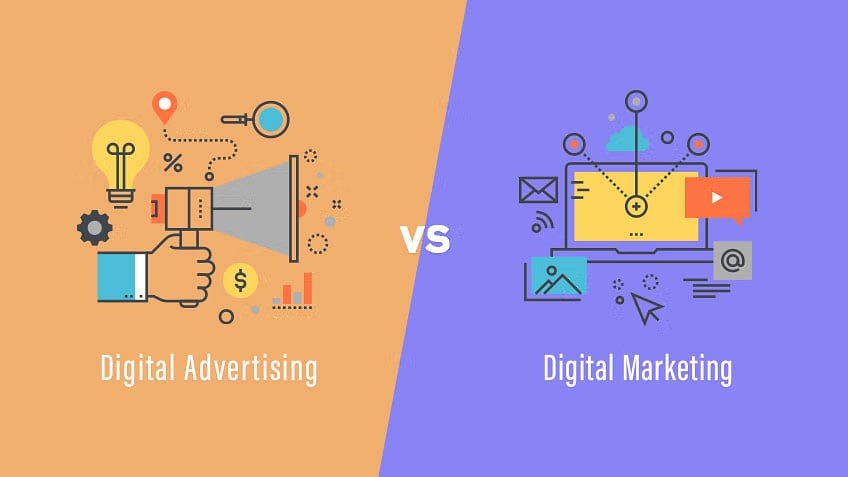Digital advertising and marketing

A fundamental element of modern showcasing strategies is digital publicising, which is designed to create captivating adverts that draw viewers in and inspire desired actions. In this study, we explore the fundamental elements that go into creating visually appealing computerised marketing, with a focus on visual offers, locked content, target audiences, and platform-specific development.
When a watcher experiences an notice, the starting visual impression frequently decides whether they will lock in encourage. High-quality visuals are foremost in capturing consideration. Utilizing dynamic colors, sharp pictures, and alluring design can make an advertisement stand out in the swarmed computerized landscape. Choosing the Right Images Selecting pictures that adjust with the brand’s generally tasteful and the item or benefit being advanced is vital. Pictures ought to not as it were be outwardly engaging but too pertinent and intelligent of the brand’s personality. For occurrence, a extravagance brand might utilize advanced and rich symbolism, whereas a casual, energetic brand might pick for more dynamic and energetic visuals. Enhancing Engagement with Movement Graphics Motion design and intuitively components can altogether improve an advertisement's visual offer. Movements, video substance, and intelligently components such as clickable symbols or gamified highlights can make advertisements more locks in. These components can draw in watchers and hold their consideration longer than inactive pictures alone.

2. Making Effortlessly Perused and Locks in Text Clarity and Straightforwardness in Messaging
The content in an promotion ought to be clear, clear, and simple to perused. The choice of words, text style fashion, and estimate all play a part in guaranteeing lucidness. Straightforward and brief messages are regularly more viable as they are simpler for watchers to prepare quickly. Powerful Dialect and Call to Action Using effective, powerful dialect can empower watchers to take activity. A clear call to activity (CTA) is basic, directing the watcher towards the following step, whether it’s making a buy, marking up for a bulletin, or going by a site. Viable CTAs are regularly coordinate and action-oriented, such as “Buy Now,” “Subscribe Today,” or “Learn More.” Tailoring Content to the Target Audience Understanding the target audience’s inclinations and torment focuses permits marketers to create messages that resound on a individual level. For occurrence, an advertisement focusing on youthful experts might emphasize comfort and productivity, whereas an advertisement focusing on guardians might center on security and reliability.
3. Selecting the Fitting Audience Understanding Group of onlookers Segmentation
One of the most basic viewpoints of computerized promoting is focusing on the right gathering of people. Marketers can utilize different criteria for group of onlookers division, counting socioeconomics, interface, behaviors, and past intelligent with the brand. Viable division guarantees that the advertisement comes to the individuals most likely to be interested in the item or service. Personalized Advertising Personalization can essentially increment the pertinence and affect of an advertisement. By utilizing information analytics, marketers can tailor advertisements to person inclinations and behaviors. Personalized advertisements can address particular needs or interface, making them more locks in and effective. Utilizing Progressed Focusing on Options Digital stages offer a run of progressed focusing on choices. Social media stages like Facebook and Instagram permit sponsors to target clients based on nitty gritty statistic and psychographic information. So also, look motors like Google offer keyword-based focusing on, guaranteeing that advertisements show up to clients effectively looking for related items or services.
4. Creating for Different Platforms Adapting to Stage Specifications
In today’s advanced age, advertisements are shown over different stages, counting social media, look motors, websites, and versatile apps. Each stage has its claim set of determinations and best hones. For case, Instagram favors outwardly wealthy, square or vertical designs, whereas Google Advertisements frequently require text-heavy, keyword-optimized content. Design Consistency Over Platforms While it’s critical to adjust advertisements for distinctive stages, keeping up a reliable brand personality over all advertisements is moreover significant. Components such as color plans, textual styles, and logos ought to stay uniform over diverse platforms. Staying Overhauled with Stage Trends Digital stages persistently advance, presenting modern highlights and changing client behaviors. Marketers require to remain educated approximately these patterns to use unused openings and keep up the adequacy of their advertisements. For occasion, the rise of short-form video substance on stages like TikTok and Instagram Reels has incited numerous brands to make more video-based advertisements.

5. Measuring and Optimizing Advertisement Performance The Part of Analytics
Data analytics plays a imperative part in evaluating the execution of advanced notices. Measurements such as click-through rates (CTR), change rates, and return on advertisement spend (ROAS) give bits of knowledge into how well an advertisement is performing. Analyzing this information makes a difference marketers get it what works and what doesn’t, empowering them to make educated adjustments. Split-Testing for Optimization Split-testing, or A/B testing, includes running different forms of an advertisement to decide which performs superior. By shifting components such as features, pictures, and CTAs, marketers can distinguish the most viable combinations. This iterative handle makes a difference in ceaselessly refining advertisement campaigns to maximize effectiveness. Continuous Improvement Digital publicizing is not a set-it-and-forget-it endeavor. It requires continuous observing and optimization. Routinely investigating execution information and making alterations guarantees that advertisements stay successful and pertinent. This nonstop enhancement approach makes a difference in adjusting to changing advertise conditions and customer behaviors.

